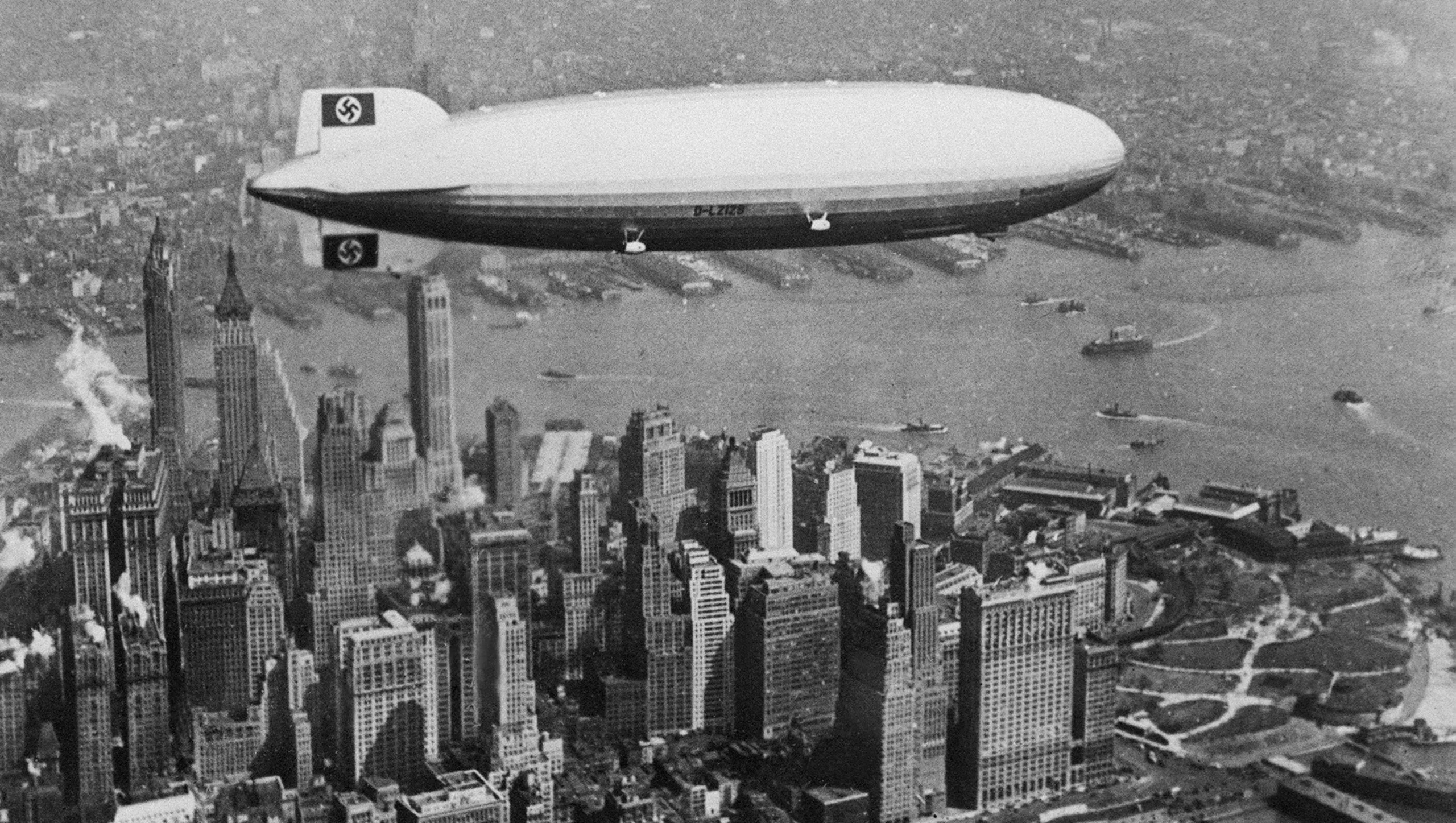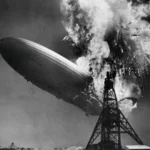The Hindenburg disaster, a moment forever etched in history, still captures our imaginations. We all know the image: that massive airship, engulfed in flames, crashing to the ground. For decades, the cause seemed straightforward. The hydrogen used to keep the airship afloat was extremely flammable, and some believed unlucky weather conditions exacerbated the situation.
However, emerging evidence suggests a more complex narrative. Recently discovered home movies, shot by those present on that fateful day, provide a fresh perspective on the disaster’s final moments. This new evidence, like a missing puzzle piece, adds another layer to our understanding of the tragedy.
But one piece remains elusive: the spark that ignited the hydrogen. Some experts theorize that static electricity, a common phenomenon, may have been the culprit. Others propose more sinister possibilities, such as sabotage. While there’s not enough evidence to confirm either theory, the possibility of sabotage adds a chilling layer to the event.
Hindenburg Disaster Investigation
The Hindenburg disaster sent shockwaves throughout the world, prompting an immediate need for answers. The U.S. Commerce Department took charge, launching a full-scale investigation led by a team of specialists, including South Trimble, R.W. Schroeder, and Denis Mulligan. Their meticulous investigation involved combing through wreckage, interviewing witnesses, and analyzing technical documents.
The investigation suggested that static electricity igniting leaking hydrogen gas was the likely cause of the fire. Interestingly, a separate investigation by the German Investigation Commission, led by Hugo Eckener, arrived at a similar conclusion. The fact that two independent investigations pointed to the same cause strengthens the static electricity theory.
It’s worth noting that static electricity wasn’t the only theory considered. Some suspected that the airship’s fabric covering played a role. However, the investigations effectively ruled out this theory, demonstrating that the fabric was not to blame for the disaster.
One thing is certain: the Hindenburg tragedy forced a reassessment of aviation safety standards. It sparked crucial changes in safety regulations, particularly in fire prevention, shaping how future air disasters would be investigated.
What was the real cause of the Hindenburg explosion?
The most likely culprit in the Hindenburg disaster is an electrostatic discharge – a sudden flow of electricity between two objects. This spark probably ignited hydrogen leaking from the airship’s outer skin, leading to the devastating fire that brought the airship down in flames on May 6, 1937. Tragically, 36 lives were lost, forever linking the Hindenburg’s name with disaster.
The official explanation, pointing to an electrostatic discharge, is compelling given the evidence found in the wreckage and eyewitness accounts. Scientists have even conducted experiments demonstrating how easily static electricity can ignite hydrogen, lending further credence to this theory.
However, the lack of a definitive answer has led to alternative theories. Some believe the Hindenburg fell victim to sabotage, suggesting a bomb planted by enemies of Nazi Germany. Others speculate that a lightning strike during the stormy weather that day could have been the culprit.
Another theory proposes hydrogen embrittlement, suggesting that prolonged exposure to hydrogen weakened the airship’s metal framework, making it more susceptible to failure.
While these alternative theories are intriguing, they lack the strong scientific evidence supporting the electrostatic discharge theory. Research is ongoing, and new insights may emerge in the future, but for now, electrostatic discharge remains the most plausible explanation for the Hindenburg’s fiery end.
Who was responsible for the Hindenburg crash?
While most agree that a hydrogen leak, combined with a spark, ignited the fire, the question of “how” the spark occurred remains unanswered. Did adverse weather conditions cause a buildup of static electricity? Was there a hidden flaw in the Hindenburg’s intricate systems? Or was it something more deliberate, like sabotage? These questions continue to spark debate among experts today.
Some researchers point to the weather conditions, suggesting that the atmosphere was primed for static electricity. Others scrutinize the airship’s design, searching for a flaw or faulty equipment that could have generated the spark. And then there are those who entertain theories of sabotage, fueled by the political tensions of the time.
The Hindenburg disaster serves as a stark reminder of the power of nature and the limits of human understanding. While it tragically ended the golden age of airships, it also forced the world to prioritize aviation safety and taught us valuable lessons about the dangers of hydrogen.
The disaster spurred engineers and scientists to find safer alternatives to flammable hydrogen, leading to stricter regulations and advancements in airship and aircraft design.
Did any passengers survive the Hindenburg?
It might seem improbable considering the horrifying images of the Hindenburg engulfed in flames, but a surprising number of passengers survived. Out of the 97 passengers and crew, 62 incredibly survived the crash. Their survival is a testament to quick thinking, bravery, and a degree of luck in the face of unimaginable danger.
Sadly, 36 people lost their lives in the tragedy. Among the survivors were two young boys, Werner Doehner and Werner Franz, who carried the memories of that day with them throughout their lives.
The Hindenburg disaster highlighted the urgent need for stricter safety regulations in aviation, particularly concerning fire prevention. It served as a harsh lesson that spurred the development of new, less flammable materials and technologies aimed at making airships and aircraft safer.
Did the dog survive the Hindenburg?
Sadly, amidst the chaos and tragedy of the Hindenburg, the two dogs on board did not survive. Ulla, a German Shepherd, and another dog, whose breed and name remain unknown, perished alongside 35 people when the airship ignited on May 6, 1937.
Ulla’s owner, Joseph Spah, was initially suspected of sabotage due to his frequent visits to his dog before the flight. However, the FBI thoroughly investigated these claims and cleared Spah of any involvement in the disaster.
Although the exact cause of the Hindenburg fire might always be debated, the tragedy’s impact on air travel is undeniable. The disaster highlighted the dangers of using flammable hydrogen in airships and paved the way for stricter safety regulations and exploring helium as a safer alternative.
Did the captain of the Hindenburg survive the crash?
Captain Max Pruss, who had taken command of the Hindenburg in 1936, remarkably survived the crash. However, he suffered severe burns that left lasting scars, a physical reminder of the tragic event he endured.
Captain Pruss’ survival is a testament to the resilience of the human spirit when confronted with unimaginable danger. His story reminds us that even in the darkest of moments, hope and the will to live can prevail.
Who Reported the Hindenburg Disaster?
The responsibility of investigating the Hindenburg disaster fell to the U.S. Commerce Department. This was due to the Air Commerce Act of 1926, which granted them authority over major air travel accidents. The Commerce Department assembled a team of experts, including legal experts, aviation specialists, and enforcement officers on May 7, 1937, just one day after the tragedy.
This team meticulously investigated the events at the Naval Air Station in Lakehurst, New Jersey, where the disaster occurred, striving to understand every detail, from the weather conditions to the handling of the airship during landing.
While the U.S. led the investigation, it’s crucial to remember that the Hindenburg disaster was a global event that captivated the world’s attention. Many other countries, particularly Germany, which built the Hindenburg, were deeply invested in uncovering the truth.
Even today, the mystery surrounding the Hindenburg disaster continues to fascinate people. Historians and scientists continue to explore various theories, seeking a definitive explanation for the fire. The official U.S. Commerce Department report offered valuable insights, but the tragedy continues to inspire research and discussion.
Who took the picture of the Hindenburg disaster?
The iconic images of the Hindenburg disaster, seared into our collective memory, weren’t just snapshots; they became vital pieces of evidence, helping investigators understand the tragedy’s unfolding.
One of the most recognized pieces of footage comes from Thomas Craven, a newsreel cameraman for Pathé News. His footage, capturing the Hindenburg’s fiery demise up close, is a chilling reminder of the event’s raw power.
Then there’s Harold Schenck, an amateur photographer who captured the airship’s descent from a different perspective. His photos, taken from a distance, provide a broader view of the airship as it began its fiery descent.
Beyond the professional photographers, numerous bystanders also captured the event with their cameras. Their photos, taken from various angles, act like individual puzzle pieces, each contributing to the bigger picture of what happened that day.
The Hindenburg disaster reminds us that history can be captured by anyone, anywhere, at any time. It highlights the importance of seemingly ordinary photographs and videos in documenting significant events.
Who breached the Hindenburg Line?
The Hindenburg Line, a heavily fortified German defensive position during World War I, was breached by Allied forces on September 29, 1918. This victory, a turning point in the war, was the culmination of a strategic offensive that began with the capture of the St. Quentin Canal.
Following the canal’s capture, the Allies unleashed a massive artillery bombardment on the Hindenburg Line, weakening the German defenses. Allied troops then seized the opportunity, advancing on the weakened positions. Despite facing fierce resistance, the Allies broke through the Hindenburg Line after four days of intense combat.
The breach of the Hindenburg Line was a decisive blow to the German war effort. It shattered their defenses on the Western Front and ultimately contributed to the Allied victory in World War I. The victory was a testament to the bravery and sacrifice of soldiers from numerous nations fighting together towards a common goal.
Who was the reporter who died in the Hindenburg disaster?
Contrary to popular belief, no reporters died in the Hindenburg disaster. However, Herbert Morrison, a radio journalist for Chicago’s WLS station, is intrinsically linked to the tragedy. While he didn’t perish in the disaster, his gripping, real-time account of the airship’s fiery end became one of the most iconic pieces of broadcast journalism ever recorded.
Morrison, alongside sound engineer Charlie Nehlsen, was assigned to cover the Hindenburg’s arrival at Lakehurst Naval Air Station. Their routine assignment transformed into a horrific spectacle as the massive airship ignited before their eyes.
Morrison’s voice, initially filled with anticipation, shifted to shock and disbelief as the disaster unfolded. His words, laced with raw emotion, painted a visceral picture of the tragedy for radio listeners across the nation. His heart-wrenching cry, “Oh, the humanity!” became a poignant symbol of the disaster’s immense human cost.
Morrison’s powerful reporting transcended the airwaves, capturing the raw emotion and devastation of the event and shaping public opinion about airship travel in the years that followed.
The Hindenburg disaster, while a tragedy, led to crucial advancements in aviation safety. It forced a reassessment of existing regulations, sparked the development of safer technologies, and ultimately made air travel safer for future generations. The disaster serves as a reminder of the importance of continuous improvement and the pursuit of knowledge, even in the face of unimaginable tragedy.
Have you heard about the ethical concerns hindenburg disaster? It highlights the ethical concerns surrounding the Hindenburg disaster, and might change your perception of the event. Also, the Zeppelin safety regulations page has a lot of detailed information on the safety regulations for all types of Zeppelins.
- SYBAU See You Baby Meaning: Gen Z Slang Evolves - July 1, 2025
- Unlock Your Inner Youth: Lifestyle Secrets for a Vibrant Life - July 1, 2025
- Decode SYBAU Meaning: Gen Z Slang Explained - July 1, 2025






